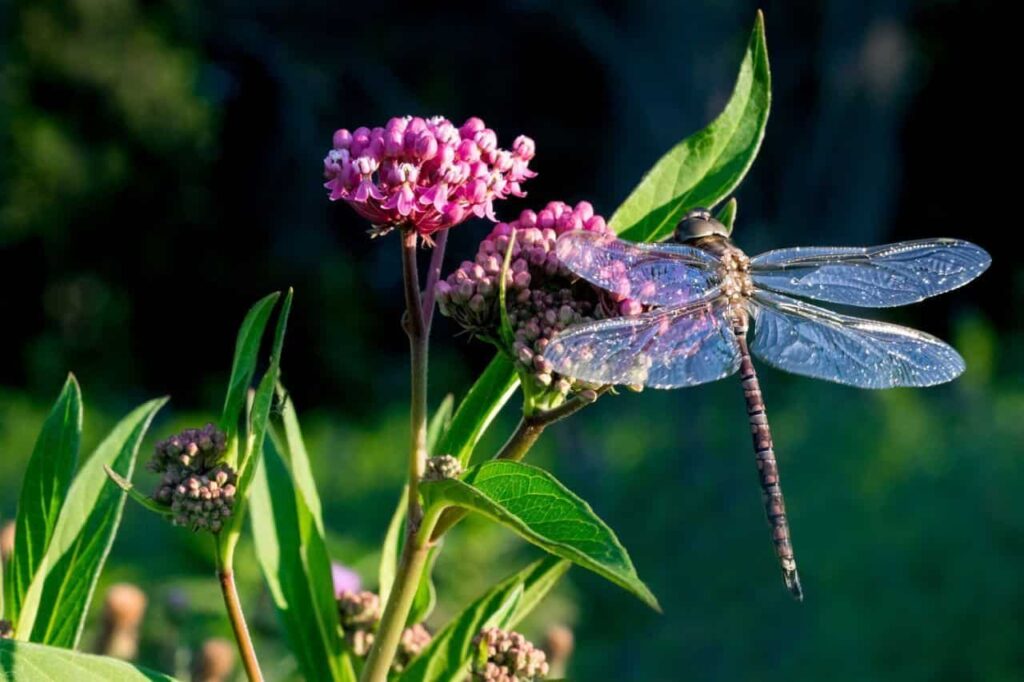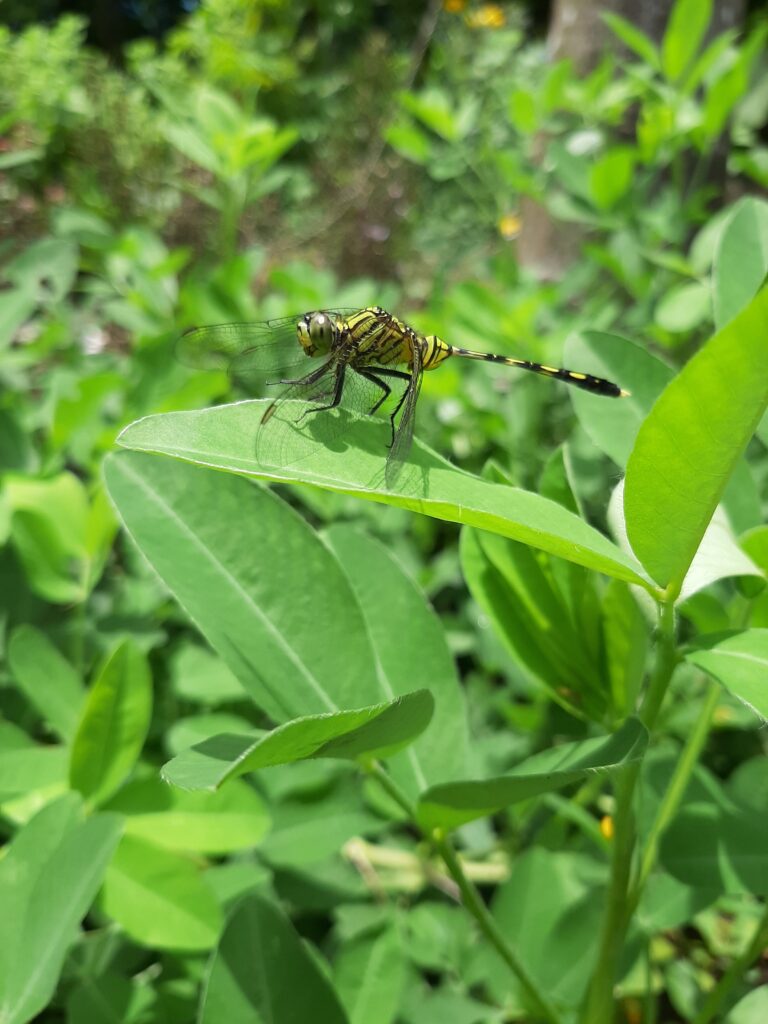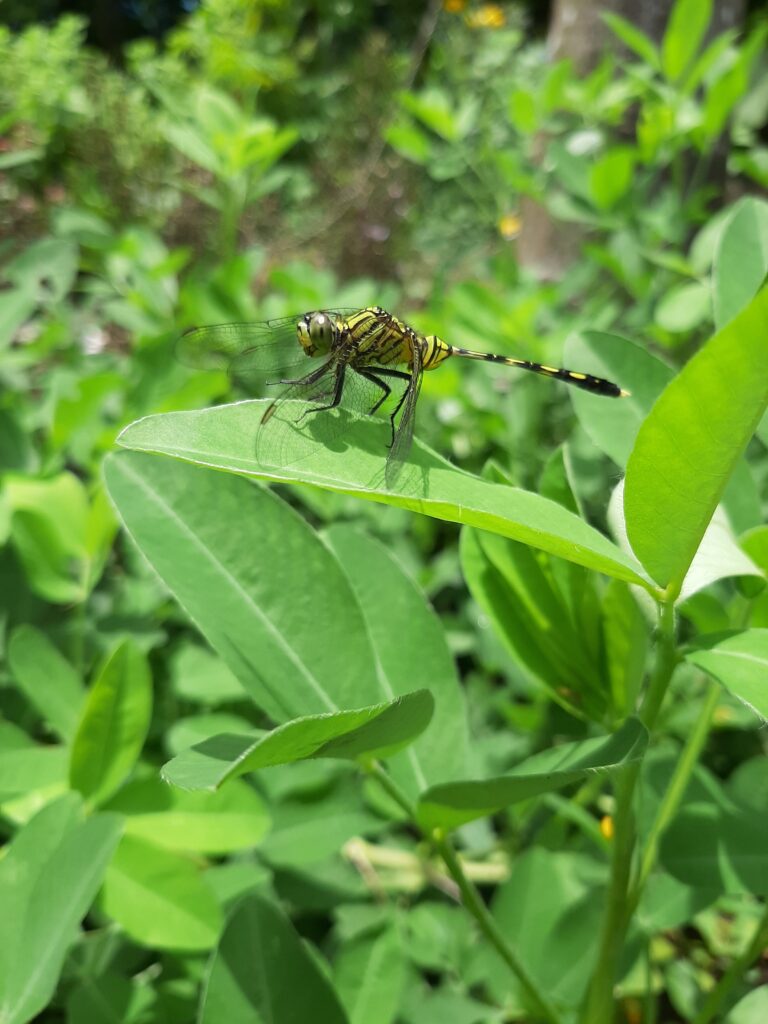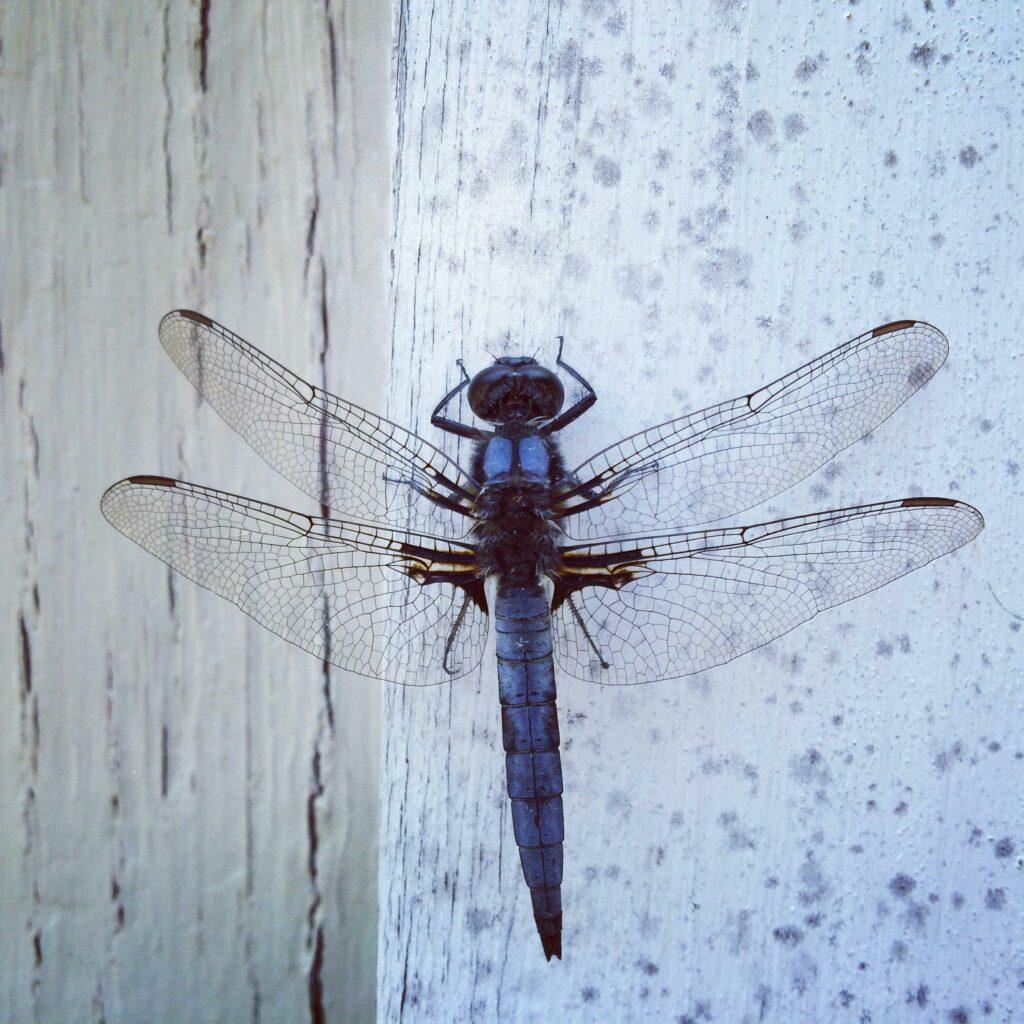Dragonflies are not only beautiful creatures to behold, but they also serve as efficient predators in controlling mosquito populations. With their voracious appetite for mosquitoes and other pests, attracting dragonflies to your garden can provide natural pest control without the need for harmful chemicals. In this article, we’ll explore seven unique ways to invite these graceful insects into your outdoor space, creating a harmonious ecosystem that benefits both your garden and the environment.
Create a Dragonfly-Friendly Habitat
Dragonflies require a suitable habitat for breeding, feeding, and resting. Start by ensuring your garden has a water source, such as a pond or shallow dish filled with water, where dragonfly nymphs can thrive before they emerge as adults. Incorporate aquatic plants like water lilies and cattails to provide shelter and egg-laying sites for adult dragonflies.

Additionally, having tall grasses and shrubs near the water’s edge offers perching spots for these aerial hunters.
Choose Native Plants
Native plants are essential for attracting native dragonfly species to your garden. These plants have co-evolved with local insect populations and provide the necessary food and habitat for dragonflies throughout their life cycle. Select a variety of flowering plants, including those with clusters of small blooms like milkweed, asters, and Joe Pye weed, which attract insects that dragonflies feed on.

Incorporating native grasses and sedges also adds diversity to your garden and enhances its appeal to dragonflies.
Provide Sunlight and Open Spaces
Dragonflies are sun-loving insects that require ample sunlight for thermoregulation and hunting. Design your garden to include open spaces and avoid shading areas with dense vegetation or structures.

Place basking rocks or logs strategically throughout your garden to provide sunny perches for dragonflies to warm themselves and survey their surroundings. Creating a sunny, open environment will make your garden more attractive to these aerial predators.
Install a Dragonfly Perch
Dragonflies are territorial creatures that often use perches to stake out their hunting grounds and defend against intruders. You can attract dragonflies to your garden by installing a simple perch made from bamboo stakes or thin branches secured in the ground. Place the perch near your water feature or in an open area where dragonflies are likely to patrol.

By providing a designated perch, you give dragonflies a reason to frequent your garden and establish it as part of their territory.
Limit Chemical Use
Chemical pesticides not only harm beneficial insects like dragonflies but also disrupt the delicate balance of your garden ecosystem. Minimize or eliminate the use of chemical pesticides and herbicides in your garden to create a safe environment for dragonflies and other beneficial insects. Instead, practice integrated pest management techniques such as companion planting, crop rotation, and natural predators to manage pest populations without harming beneficial insects.

By reducing chemical use, you promote a healthier and more diverse ecosystem that attracts dragonflies and other beneficial wildlife.
Provide Shelter and Protection
In addition to water and food, dragonflies need shelter and protection from predators and adverse weather conditions. Incorporate a variety of structures into your garden, such as rock piles, log piles, and dense vegetation, to provide hiding spots and refuge for dragonflies. Creating a diverse range of microhabitats within your garden increases its overall biodiversity and enhances its appeal to dragonflies and other wildlife.

By offering shelter and protection, you create a welcoming environment that encourages dragonflies to take up residence in your garden.
Be Patient and Observant
Attracting dragonflies to your garden requires patience and observation as these creatures establish themselves over time. Take the time to observe dragonfly behavior and movement patterns in your garden, noting where they prefer to perch, feed, and breed. By understanding their habits and preferences, you can fine-tune your garden to better accommodate their needs and increase the likelihood of attracting more dragonflies.
Remember that creating a dragonfly-friendly garden is a process that evolves over time, so be patient and enjoy the journey as you welcome these beneficial insects into your outdoor space.
By implementing these seven unique strategies, you can create a welcoming habitat that attracts dragonflies to your garden, providing natural pest control and enhancing biodiversity. From creating a dragonfly-friendly habitat to limiting chemical use and providing shelter and protection, each step plays a crucial role in making your garden a haven for these graceful aerial predators. By working in harmony with nature, you can transform your garden into a vibrant ecosystem that benefits both humans and wildlife alike. So, roll up your sleeves, get your hands dirty, and start attracting dragonflies to your garden today!
